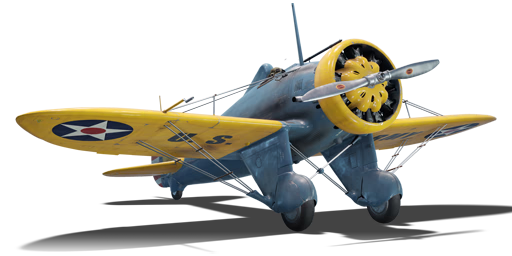



The P-26A-33 is an American fighter. It has been in the game since the start of the Open Beta Test prior to Update 1.27.
First funded in 1931 by Boeing, the P-26 Peashooter was ordered by the US Army Air Corps to assist as a monoplane fighter. Early prototypes flown in 1932 had one fatal flaw: the landing speed. The landing speed was too high and it would cause gear failure, leading to crashes. Later models of the P-26 had landing flaps to combat this. The P-26 was designed to be faster and more manoeuvrable than the current biplanes. When WW2 broke out, the P-26 was exported to some of the Allies of the USA, and they were still in use when the USA entered the war in 1941. In 1956, the final pair of P-26 Peashooters were taken out of service and replaced by P-51 Mustangs, therefore retiring the P-26 Peashooter. This air frame was used for nearly 25 years.
flaps
flaps
flaps
brake
control
| Belt | Belt filling | Armor penetration (mm) at a distance: | |||||
|---|---|---|---|---|---|---|---|
| 10 m | 100 m | 500 m | 1000 m | 1500 m | 2000 m | ||
| T/AP/AP/AP/I | 13 | 12 | 7 | 3 | 2 | 0 | |
| T/AP/I | 13 | 12 | 7 | 3 | 2 | 0 | |
| AP/T/T | 13 | 12 | 7 | 3 | 2 | 0 | |
| AP/AP/I/I | 13 | 12 | 7 | 3 | 2 | 0 | |












Flight performance | |
|---|---|
Survivability |
|---|
Weaponry | |
|---|---|